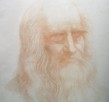
 |
2. The Inventor's First Steps to Protecting His InventionSoon after you conceive of an invention which you believe has market potential, I strongly recommend that you consult with a registered patent practitioner (an attorney or agent). The initial consultation is often provided without charge, so you have little to lose. And because patent rights can be very fragile, you may have everything to gain from a visit-- if you don't know the law, you can lose your rights--it's that simple! Why are these rights fragile? The patent laws have provisions which require that you take action to secure your rights to patent protection in a timely manner. In Europe, for example, a properly prepared patent application must be filed in a Paris Convention country (the US, Europe, and most industrialized nations) BEFORE making information about the invention "available to the public" as defined in the European Patent Convention, Article 54. "Making available" includes providing information about an invention to a potential manufacturer or any one else, without it being understood that your disclosure is a confidential disclosure. Fortunately, if all you seek is a U.S. or Canadian patent, the patent laws of these nations may give you a one year period in which you can file the original patent application. In any case, the laws are complex and it is easy to misinterpret them. Therefore, again, you should see a professional patent practitioner as soon as possible! Note: the remainder of this Patent FAQ deals exclusively with United States Patent Law, unless otherwise stated.
Under U.S. patent law, it is equally as important that you document your invention thoroughly. If you haven't already done so, I suggest that at your next available opportunity you sketch the major elements of the invention in a notebook, as well as write a detailed description of its operation, followed by a discussion of its purposes and the advantages. A witness (two are better than one) should then sign your description. The witness should be (1) trustworthy, (2) willing to agree to keep your invention confidential, and (3) unbiased (e.g., not be related to you). If the invention is highly technical, it is important that your witnesses have a working knowledge of the technical field of your invention so that they will be able to understand its operation. Further, I suggest that you ask your witnesses to sign each drawing page, under a statement which reads somewhat like that shown below:
The witness may hand write the above statement in the margins of each page. Notarizing the drawings and written descriptions is not necessary--neither is sending a copy to yourself via registered mail. However, if you wish to do this, or you have already done so, it certainly cannot harm you. RETURN to FAQ |